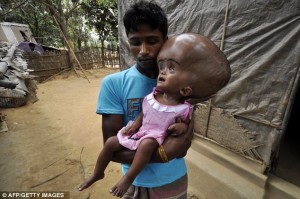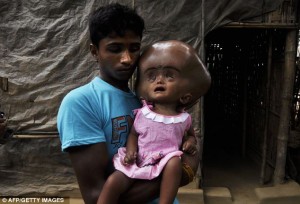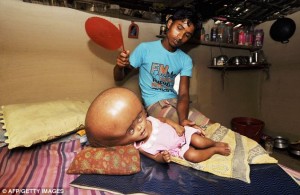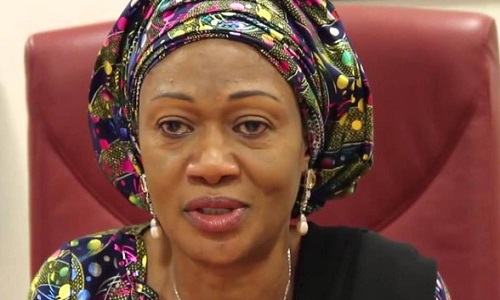These heartbreaking pictures show a rural Indian girl of just 18 months old suffering from hydrocephalus, a build up of fluid inside the skull. The family of Roona Begum, from the village of Jirania in India’s north-eastern state of Tripura, cannot afford to pay for her to be treated. Her father Abdul Rahman, 26, works in a brick factory, where he earns the equivalent of just N434 a day.
Babies who are born with hydrocephalus would normally require prompt surgical treatment to avoid being left permanently disabled. But without the means to pay for a doctor, Mr Rahman and his family can only do their best to keep Roona comfortable as they watch her condition slowly and inexorably deteriorate. Sometimes misleadingly known as water on the brain, hydrocephalus is caused by a build-up of the cerebrospinal fluid inside the skull, increasing pressure on the brain inside.
The brain constantly produces new cerebrospinal fluid at the rate of about a 500 mL a day, while old fluid is released from the brain and reabsorbed into the blood vessels. But if this process is interrupted, as in individuals with hydrocephalus, levels of the fluid can quickly build up and place pressure on the brain, causing headaches, blurred vision and, eventually, permanent brain damage.
Left untreated, if it progresses very quickly, the babies usually die because their brain tissues are unable to adapt. But if the condition develops more slowly, as in Roona’s case, the child adapts by growing their skulls to contain the excess fluid. However, the adaptation can only go so far.
The main treatment for hydrocephalus is to implant a thin tube, called a shunt, in the brain to drain excess cerebrospinal fluid to another part of the body where it can be more easily reabsorbed. The shunt has a valve inside it to control the flow of fluid and to ensure it does not drain too quickly, which those treated can feel as a lump under the skin of their scalps.
It’s done by paediatric neurosurgeons, but its not a very demanding procedure. The operation usually lasts about 30 minutes. The shunts themselves usually cost a few hundred pounds, she said, going up to around N194,206 for the state-of-the-art models.
Experts estimate that the congenital form of the condition affects around one in every 500 children. It can be caused by birth defects like spina bifida, or as the result of an infection that the mother develops during pregnancy, such as mumps or rubella. The condition can also be acquired after birth by both adults and children, often as the result of a serious head injury or medical condition such as a brain tumour.
Without an expert medical opinion, it is impossible to know how Roona came to be affected by hydrocephalus and impossible to know what related conditions she might be suffering from.
In the West, children diagnosed with the disorder and promptly treated can go on to lead normal lives. In India, things are different. In a blunt assessment of his government’s failure to extend a social safety net for the poor, India’s rural development minister said last year that the country’s public health system had ‘collapsed’.








May God heal this little girl.
God,please heal ds lil baby.
In Jesus name u re heal
God pls help dis innocent baby
allahumo inni as_haluku lahu_azim robul_arshil0azim an yashfika